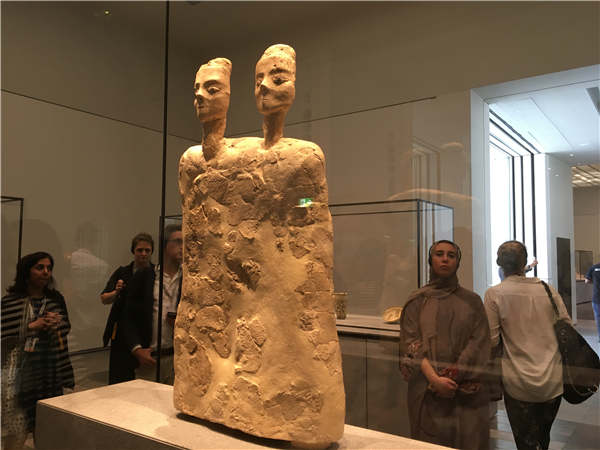 |
|
The newly opened Louvre Abu Dhab with a huge dome is a architectural wonder and a world-class museum. [Photo by Wang Kaihao/China Daily]
|
Funerary practices of ancient Egypt are illustrated by a sarcophagus of Princess Henuttawy (dating from around 950 to 900 BC), and visitors are likely to be wowed by 2,300-year-old statue of King Ramses II of Egypt.
Of course, it is always a pleasure to see Chinese antiquities when traveling overseas. For instance, a white marble head of a statue of Buddha dating back to the 6th century, is one highlighted exhibit. Yet a lack of precise information regarding the origins of the piece, both in terms of its location and date, leaves me wondering how it came to be separated from the body of the sculpture, and how it ended up abroad in the first place.
It makes me proud to see a set of figurines in ceramic glaze from the Tang Dynasty (618-907), which vividly portrays the life of nobility at that time through its depiction of a man involved in falconry.
And, there is always chemistry when different civilizations have a rendezvous at the Louvre Abu Dhabi. Three ewers - one from China, one from India, and one from Turkey - are juxtaposed in the same exhibit to highlight their differing artistic styles.
A lacquer tomb guardian showing hybrid creatures from China's Warring States Period (475 to 221 BC) sits besides a piece of pottery of its time from Greece, which is decorated with a painting depicting Heracles fighting a lion. The pieces may come from different civilizations, but they both show early forms of homage to their respective deities.

